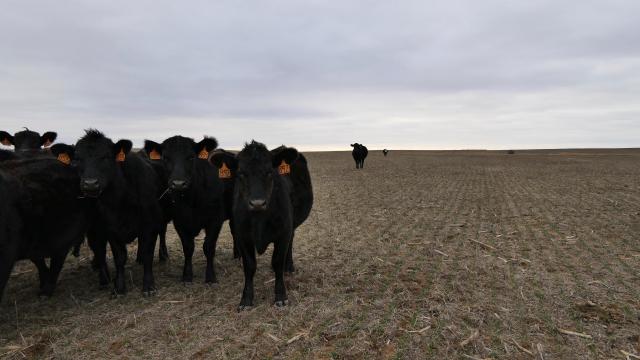High temperatures in Kansas last weekend killed thousands of cattle, authorities confirmed this week, after footage of rows of cattle corpses was widely shared online.
A spokesperson for the Kansas Department of Health and Environment told multiple media outlets that the agency had gotten reports of at least 2,000 cattle deaths that happened over the weekend of June 11-12 in the southwestern part of the state. The agency said that the number comes from the farms that asked for help in getting rid of the bodies, since cattle ranchers aren’t required to report deaths to the agency, a spokesperson told NPR. This indicates that the actual death toll could be much higher: Industry estimates put the number of cattle that died as high as 10,000.
Temperatures reached as high as 108 degrees Fahrenheit (42 degrees Celsius) in parts of the state last weekend. Making matters worse, winds dropped and humidity spiked, creating deadly conditions for the cattle.
“It was essentially a perfect storm,” AJ Tarpoff, a veterinarian at Kansas State University, told Reuters.
Kansas wasn’t the only place that baked last weekend. These conditions were part of a massive heatwave that has swept across the country in recent days. Heat records in the triple digits were set last weekend in Western states from California to Texas, while temperatures climbed to the 90s and beyond in the middle of the week in several states in the Midwest and the South as the heat moved east. Next week, the NWS predicts excessive heat will hit as far north as South Dakota all the way down to the Gulf Coast and stretching to the Carolinas and Florida. In its groundbreaking report issued last year, the Intergovernmental Panel on Climate Change found that heatwaves that used to occur once every 10 years are now happening twice as often, thanks to climate change.
Temperatures are set to skyrocket back up to the triple digits this weekend in parts of Kansas, but there will likely be less humidity and more wind, forecasters say. Still, farmers will have to be careful. Cattle are particularly susceptible to high heat: They have few sweat glands and rely on respiration — panting — to keep cool. What’s more, their digestive process creates heat inside their bodies, which they dissipate during the evening, when it tends cooler; hot nights create fewer opportunities for them to get rid of this built-up heat.
“You can’t say, ‘Oh I checked them three days ago,’” Brenda Masek, president Nebraska Cattlemen, an industry group, told Reuters. “When it gets hot, you’ve got be to out every day and making sure that their water is maintained.”
Kansas is the third-largest cattle producer in the country, behind only Texas and Nebraska, with more than 6 million head of cattle in 2018 — nearly 7% of the total number of cattle in the U.S. The global cattle industry is a huge source of dangerous greenhouse gases that cause climate change, thanks to cows’ natural digestive processes that create methane, a process known as enteric fermentation. In 2019, enteric fermentation was the number one source of methane emissions in the U.S., accounting for more than 27% of total methane emissions. This number has risen since the 1990s in tandem with an increase in the number of cattle in the U.S.
